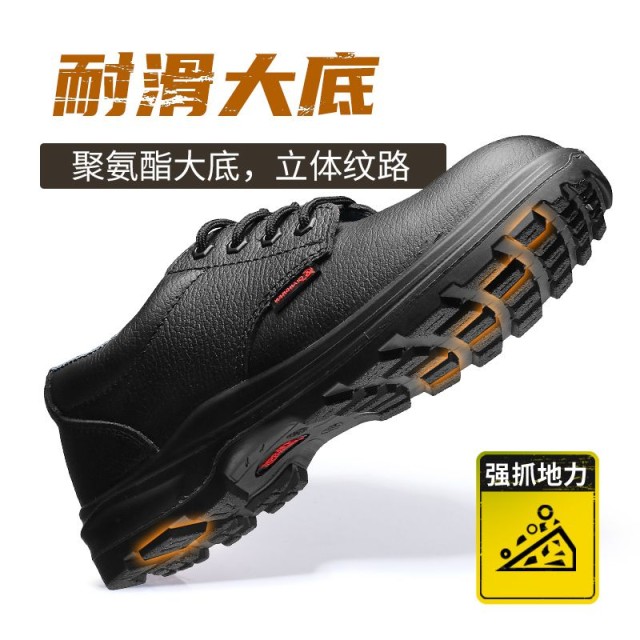For workers in mining, construction, and industrial settings, every step carries risk—from slippery oil patches to jagged debris. Traditional rubber soles often fall short in these extreme conditions. This article reveals why TPU (thermoplastic polyurethane) soles are becoming the gold standard for high-risk work environments, offering unmatched safety, longevity, and cost savings.
TPU Soles in Work Boots: Engineering for Extreme Conditions
TPU soles are engineered to tackle the toughest workplace hazards. Unlike rubber, TPU combines molecular flexibility with high-density resilience, creating a sole that adapts to stress without cracking or losing traction. Research shows this material excels in three critical areas:
- Oil and Chemical Resistance
- Abrasion Defense
- Weight-to-Durability Ratio
Let’s examine how these properties translate into real-world benefits.
How Oil Resistance Prevents Workplace Hazards in Industrial Settings
Slippery surfaces cause over 20% of industrial accidents annually. TPU soles combat this through:
- Microscopic Grip Patterns: The material’s polymer structure creates natural suction against oil films, maintaining traction where rubber soles fail.
- Chemical Stability: TPU won’t degrade when exposed to hydrocarbons or solvents, a common issue with rubber that becomes brittle over time.
"Have you noticed how some soles turn slick after months of oil exposure? TPU’s non-porous design resists absorption, keeping traction consistent."
The Science Behind Abrasion Resistance and Long-Term Wear
In mining and construction, soles face constant abuse from rough surfaces. TPU outperforms rubber due to:
- Higher Shear Strength: Lab tests show TPU withstands 2–3× more abrasion cycles before showing wear.
- Energy Return: The material’s elasticity reduces fatigue by bouncing back with each step, unlike rubber that compresses permanently.
Workers report TPU-soled boots last 30–50% longer in high-impact roles, reducing replacement frequency.
Lightweight Design vs. Durability: Debunking the Trade-Off Myth
Heavy boots contribute to leg fatigue during 12-hour shifts. TPU solves this by being:
- 30% Lighter Than Rubber: Reduces muscle strain without sacrificing protection.
- Structurally Efficient: Thinner TPU layers provide equal durability to thicker rubber, improving agility.
A study of warehouse workers found those wearing TPU-soled boots experienced 15% less end-of-shift fatigue.
Cost-Efficiency of TPU: Reducing Replacement Cycles in High-Impact Jobs
While TPU boots may cost slightly more upfront, their longevity delivers savings:
| Factor | Rubber Soles | TPU Soles |
|---|---|---|
| Avg. Lifespan | 6–8 months | 12–18 months |
| Replacement Cost | $100/year | $60/year |
For bulk buyers like construction firms, this cuts footwear budgets by nearly half.
Step Into the Future of Work Footwear with 3515
Why settle for outdated rubber technology? 3515’s TPU-soled work boots are engineered for distributors and industrial clients who prioritize worker safety and operational efficiency. Our designs merge laboratory-proven materials with real-world durability—because every step should be secure, comfortable, and cost-effective.
Ready to upgrade your safety footwear lineup? Partner with 3515 to equip workers with boots built for extreme conditions.
Products You Might Be Looking For:
View oil-resistant TPU work boots
Explore durable steel-toe safety boots
Check customizable industrial work boots
See long-lasting construction footwear
Related Products
- Wholesale Customizable Suede Safety Boots - Puncture-Proof with Velcro Closure
- Wholesale Durable Breathable Safety Boots Custom OEM Manufacturer
- Wholesale Slip-On Safety Boots Manufacturer - Custom Puncture-Proof & Steel Toe
- Wholesale Leather Safety Boots with Customizable Protective Toe
- Wholesale Customizable Safety Boots Durable & Protective Footwear Manufacturing
Related Articles
- How to Choose Work Boots That Match Your Industry's Safety Needs
- How to Choose Work Boots That Match Your Job Demands and Safety Needs
- Work Boots vs. Western Boots: How to Choose the Right Footwear for Labor Safety
- Matching Men’s Work Shoe Safety Technologies to Workplace Hazards
- How to Choose Work Boots That Balance Safety, Comfort, and Durability for Your Job



















